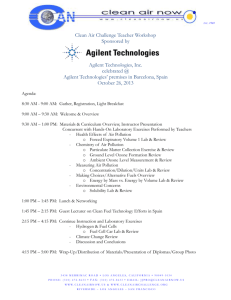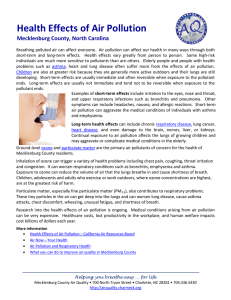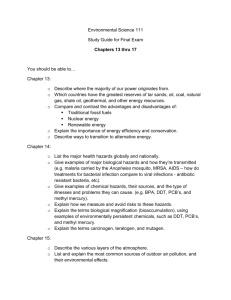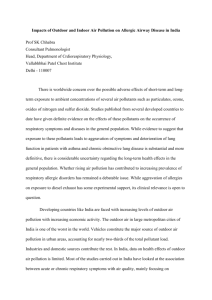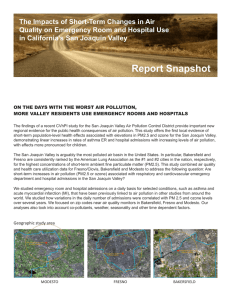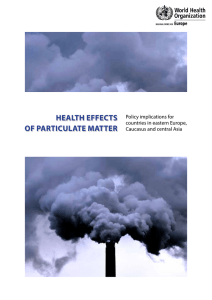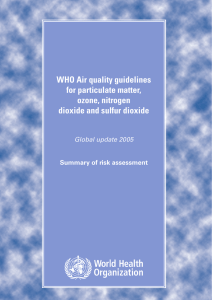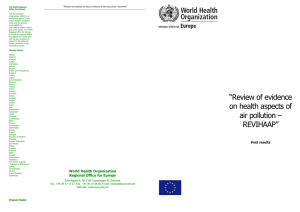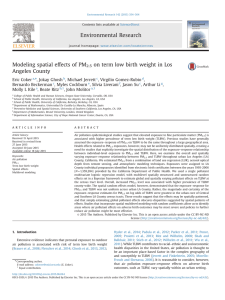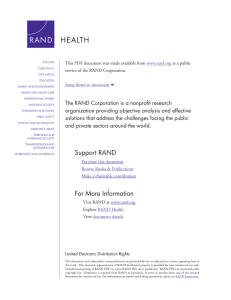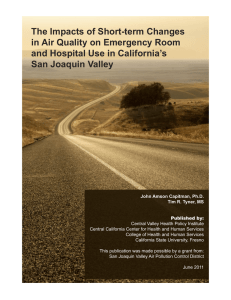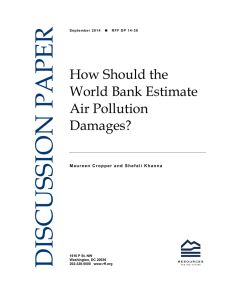DOC
advertisement
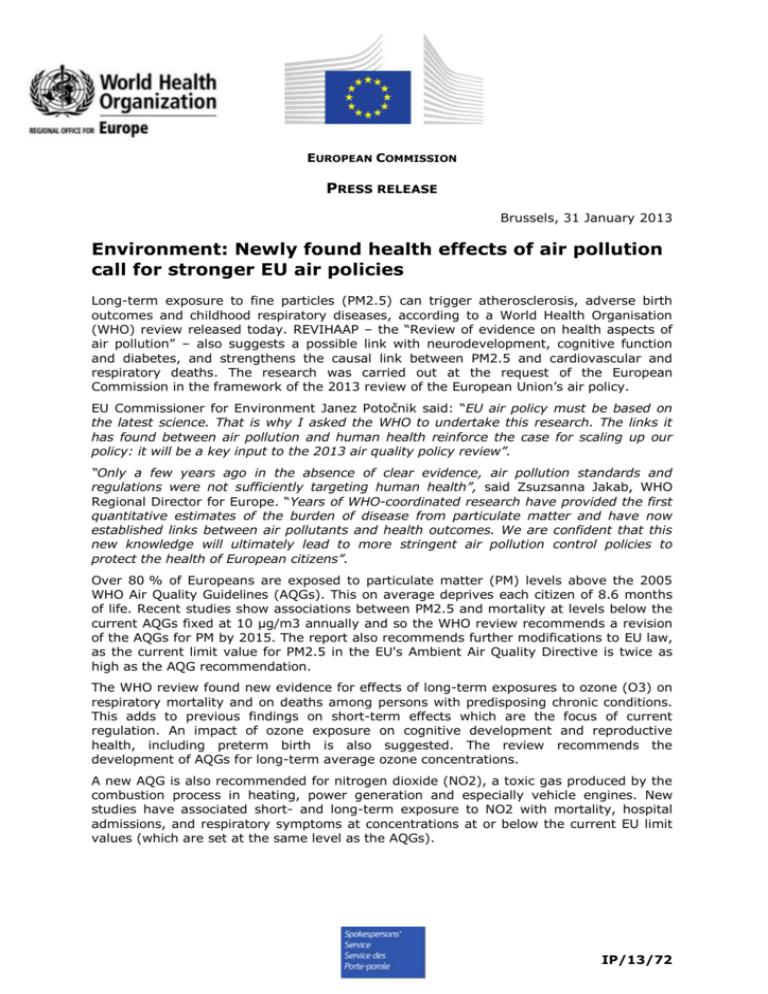
EUROPEAN COMMISSION PRESS RELEASE Brussels, 31 January 2013 Environment: Newly found health effects of air pollution call for stronger EU air policies Long-term exposure to fine particles (PM2.5) can trigger atherosclerosis, adverse birth outcomes and childhood respiratory diseases, according to a World Health Organisation (WHO) review released today. REVIHAAP – the “Review of evidence on health aspects of air pollution” – also suggests a possible link with neurodevelopment, cognitive function and diabetes, and strengthens the causal link between PM2.5 and cardiovascular and respiratory deaths. The research was carried out at the request of the European Commission in the framework of the 2013 review of the European Union’s air policy. EU Commissioner for Environment Janez Potočnik said: “EU air policy must be based on the latest science. That is why I asked the WHO to undertake this research. The links it has found between air pollution and human health reinforce the case for scaling up our policy: it will be a key input to the 2013 air quality policy review”. “Only a few years ago in the absence of clear evidence, air pollution standards and regulations were not sufficiently targeting human health”, said Zsuzsanna Jakab, WHO Regional Director for Europe. “Years of WHO-coordinated research have provided the first quantitative estimates of the burden of disease from particulate matter and have now established links between air pollutants and health outcomes. We are confident that this new knowledge will ultimately lead to more stringent air pollution control policies to protect the health of European citizens”. Over 80 % of Europeans are exposed to particulate matter (PM) levels above the 2005 WHO Air Quality Guidelines (AQGs). This on average deprives each citizen of 8.6 months of life. Recent studies show associations between PM2.5 and mortality at levels below the current AQGs fixed at 10 µg/m3 annually and so the WHO review recommends a revision of the AQGs for PM by 2015. The report also recommends further modifications to EU law, as the current limit value for PM2.5 in the EU's Ambient Air Quality Directive is twice as high as the AQG recommendation. The WHO review found new evidence for effects of long-term exposures to ozone (O3) on respiratory mortality and on deaths among persons with predisposing chronic conditions. This adds to previous findings on short-term effects which are the focus of current regulation. An impact of ozone exposure on cognitive development and reproductive health, including preterm birth is also suggested. The review recommends the development of AQGs for long-term average ozone concentrations. A new AQG is also recommended for nitrogen dioxide (NO2), a toxic gas produced by the combustion process in heating, power generation and especially vehicle engines. New studies have associated short- and long-term exposure to NO2 with mortality, hospital admissions, and respiratory symptoms at concentrations at or below the current EU limit values (which are set at the same level as the AQGs). IP/13/72 Next Steps A full technical report for REVIHAAP will be available in the spring 2013. Background The “Review of evidence on health aspects of air pollution – REVIHAAP” is a WHO-led project, commissioned in the framework of the 2013 review of the European Union’s air policy. It aims to develop evidence-based responses to questions on general aspects of importance for air quality management, as well as specific topics of interest for individual air pollutants. A Scientific Advisory Committee has guided the review conducted by a group of academic experts across the world. The 2005 WHO Air quality guidelines (AQGs) are designed to offer global guidance on reducing the health impacts of air pollution. Whereas the original guidelines had a European scope, the latest 2005 guidelines apply worldwide and are based on expert evaluation of current scientific evidence. They recommend limits for the concentration of selected air pollutants (particulate matter (PM), ozone (O3), nitrogen dioxide (NO2) and sulfur dioxide (SO2)). Particular matter (PM) is an air pollutant that consists of a mixture of solid and liquid particles suspended in the air, commonly composed of sulphates, nitrates, ammonium, and other substances. The main sources of man-made PM include heating in households, industrial activities and road traffic. Health effects of PM include respiratory and cardiovascular diseases and lung cancer. European Commissioner for Environment Janez Potočnik has declared 2013 as the Year of Air for EU policies. The plan is to highlight the importance of clean air for all and to focus on actions to improve air quality across the EU. For more information: “Review of evidence on health aspects of air pollution – REVIHAAP Project” – First results: http://www.euro.who.int/en/what-we-do/health-topics/environment-and-health/airquality/publications/2013/review-of-evidence-on-health-aspects-of-air-pollution-revihaap/ 2 See also: Air Quality Guidelines – global update 2005: http://www.who.int/phe/health_topics/outdoorair/outdoorair_aqg/en/index.html The 2013 review of EU air policy: http://ec.europa.eu/environment/air/review_air_policy.htm WHO Air Quality: http://www.euro.who.int/en/what-we-do/health-topics/environment-and-health/airquality Contacts : European Commission Joe Hennon (+32 2 295 35 93) Monica Westeren (+32 2 299 18 30) WHO Regional Office for Europe Cristiana Salvi - Tel.: +45 39171379, +45 29634218 (mob.) - E-mail: csa@euro.who.int 3




